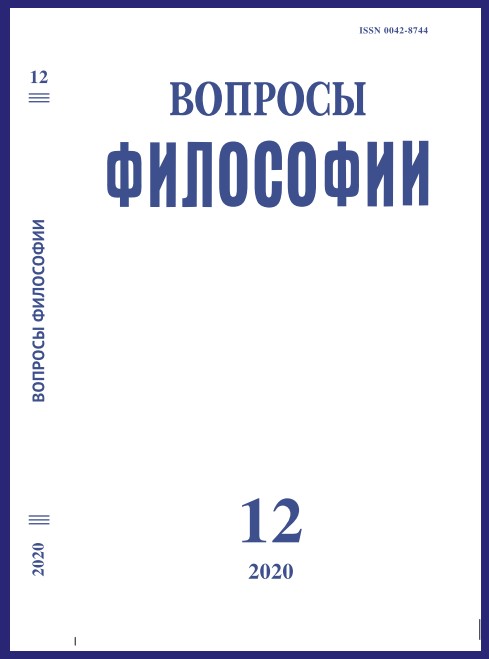What Does It Mean Philosophy of the Collective Science?
DOI:
https://doi.org/10.21146/0042-8744-2020-12-115-123Keywords:
Philosophy of Science, scientific community, scientific collective, little Science, Big Science, Collective Subject, scientific school, invisible college, Big Hudron Collayder.Abstract
One of the most important tasks which the philosophy of science faces today is the comprehension and methodological regulation of new forms of collective scientific work that are emerging today. The solution to this problem presupposes, in turn, a rethinking of traditional epistemological ideas about cognitive activity, and above all, the idea of its subject. The interpretation of the cognition subject as a cognitive robinson needs to be rethought. For this purpose, the author believes, the philosophy of science should turn to the analysis of the peculiar population effects arising in modern scientific communities. Moreover, in the author's opinion, for a more effective implementation of this analysis, it should be extracted into a special section of the philosophy of science – the philosophy of collective science – which focuses on features of scientific research within the framework of collaboration – cooperation, rather than on the individual creative activity of scientists. Today the research in this direction develops intensively. Both foreign (among whom I would like to note the works of P. Galison) and domestic researchers (I. Kasavin, V. Pronskikh, B. Pruzhinin) are working in this direction today. To the population effects requiring a special philosophical and methodological analysis the author refers: difficulties in developing a professional language of science for the scientific community which performs collective research; the existence of the phenomenon of fashionable scientific direction that deforms cognition; phenomena associated with the exchange of information using scientific messages. The article also touches on the issue of analyzing the structure of the collective subject of cognition. Research teams as subsystems of a collective subject are divided into: structural research teams and informal research teams. All these phenomena reveal themselves in many areas of modern science. But they are especially vividly observed within the framework of the so-called Big Science (megascience). The article also attempts to show that three different types of “collectivity” of scientific activity can be distinguished in collective science.

